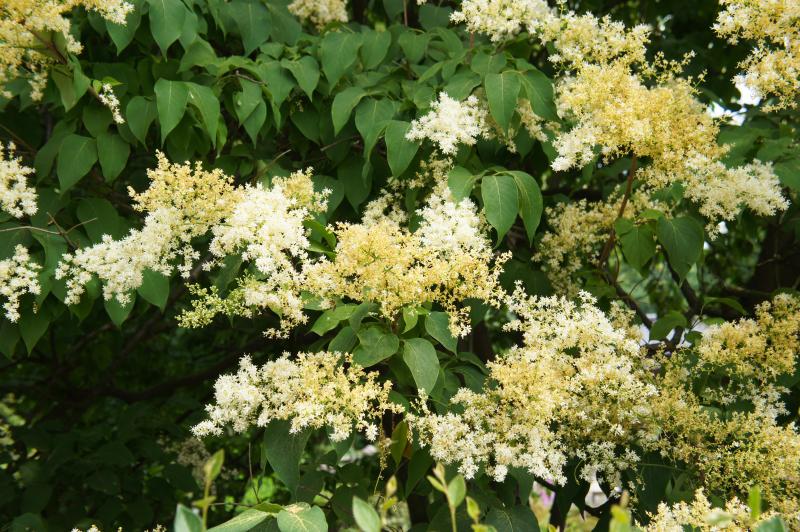Japanese lilac trees attract pollinators, resist disease
Japan is a land of many surprises. For instance, there are 118 volcanoes in Japan, more than any other country.
Police shoot paintballs at fleeing motorists in Japan to identify the runaways easily.
Japanese farmers place developing watermelons inside boxes so the fruits grow into square shapes that stack more easily.
Besides square watermelons, Japan gives gardeners the Japanese lilac (Syringa reticulata). This mildly fragrant plant has reddish bark marked with white that makes it attractive even during the winter.
Unlike the more familiar shrubby common lilac (Syringa vulgaris), the Japanese lilac (Syringa reticulata) has more of a tree form that can stand alone as a specimen. It grows moderately fast with a rounded shape. It will eventually reach 20-30-feet tall and 15-20-feet wide.
This midsize tree blooms slightly later than common lilacs, extending the season well into June with panicles of white flowers that can reach up to a foot long. It blooms for about two weeks in early summer, and the tree's heart-shaped leaves add to its charm. Butterflies, hummingbirds and bees are attracted to the flowers. Seedpods follow the flowers and hang on the tree throughout the winter for added interest. Songbirds will eat the seed capsules.
Japanese lilac is hardy in USDA zones 3-7. Late winter or early spring is the best time to plant your Japanese lilac tree, and they can also be planted in late fall before the ground freezes. Choose a planting site with well-drained soil in full or partial sun. While Japanese lilac will do well in partial sun, it won't produce as many flowers. It will grow in either neutral or slightly acidic soil.
Because it needs well-drained soil, mix compost into the ground when planting it if your soil is heavy clay. Keep the soil evenly moist, but not waterlogged. Mulch helps hold in the soil moisture. You can feed your Japanese lilac tree by digging in compost into the ground every spring.
The Japanese lilac is usually free from disease or pests and is more resistant to powdery mildew disease than common lilacs. Even with this disease resistance, it's still a good gardening practice to plant them far enough apart so air circulates around and through them.
This tree lilac is small enough to plant next to a patio or deck. Its root system is non-aggressive, so it can safely grow near sidewalks, driveways and septic systems.
Cultivars are available that often bear more blooms than the species plant. Summer Snow is a smaller tree that will only reach 20 feet tall. It is especially tolerant of air pollution, making it a great choice as a street tree. Chantilly Lace has variegated foliage, with leaves showing creamy yellow margins. It grows to 20-30-feet high and 15-25-feet wide, and does best in partial sun.
You can propagate Japanese lilac trees from cuttings taken in late spring or early summer. Once planted, the cuttings will root in about six weeks.
The main advantage of Japanese lilac over its more common cousin is that you can more easily train Japanese lilac into tree form, and it can live for 40 to 50 years. Prune off low branches every year in early spring, exposing as much trunk as you want to have in the mature tree. This pruning is especially important in the first few years after planting when you are training your plant to become a tree.
While you may never see a square Japanese watermelon, you can plant a Japanese lilac for years of enjoyment. And look out for paintballs.






















































